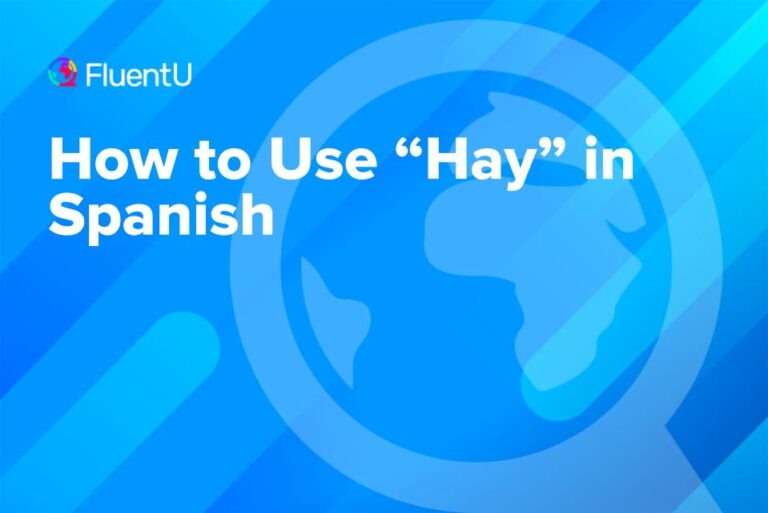24 Most Common IR Verbs in Spanish

Spanish verbs have three possible endings: -ar, -er and -ir, but today we’re focusing on -ir verbs. Odds are, you will use -ir verbs in almost every Spanish conversation you have.
And lucky for you, you’ll be well equipped after reading this guide—so get ready to learn the 24 most common -ir verbs in Spanish, plus how to conjugate and practice them.
Download: This blog post is available as a convenient and portable PDF that you can take anywhere. Click here to get a copy. (Download)
Conjugating Spanish IR Verbs
As with any verb, to form the different tenses with -ir verb, drop the -ir from the infinitive (the base form of the verb) and add the following endings:
| Subject | Present | Past Imperfect | Preterite | Simple Future |
|---|---|---|---|---|
| Yo | -o | -ía | -í | -é |
| Tú | -es | -ías | -iste | -ás |
| Él/ella/usted | -e | -ía | -ió | -á |
| Nosotros | -imos | -íamos | -imos | -emos |
| Vosotros | -ís | -íais | -isteis | -éis |
| Ellos/ellas/ustedes | -en | -ían | -ieron | -án |
For example, if you were to conjugate escribir (to write) in the present tense, you’d end up with:
Yo escribo
Tú escribes
Él/ella/usted escribe
Nosotros escribimos
Vosotros escribís
Ellos/ellas/ustedes escriben
Note that vosotros (the plural informal “you”) is only used in Spain. If you’re planning on just speaking Spanish in the Americas, you’ll use ustedes with any groups of people you encounter.
When it comes to irregular -ir verbs, every conjugation may be a little bit different. You mostly have to memorize irregular verbs and their conjugations, but some patterns will help you.
However, most of the time the nosotros form is not irregular. Let’s take the verb dormir (to sleep) for example. Notice how the stem from dorm- to duerm- for all of the different forms except for the nosotros form:
Yo duermo
Tú duermes
Él/ella/usted duerme
Nosotros dormimos
Vosotros dormís
Ellos/ellas/ustedes duermen
Most Common Regular IR Verbs in Spanish
There are quite a few -ir verbs that will follow the conjugation rules without any strange changes. These are 12 of the most common regular -ir verbs that you will use.
1. Compartir — To share
Ellos comparten la comida. — They share the food.
2. Confundir — To confuse
If you’ve already learned about reflexive verbs, you’ll definitely want the reflexive form as well, confundirse (to get mixed up, be confused, make mistakes):
Siempre confundo la bachata con el merengue. — I always get bachata mixed up with merengue.
Laura se confunde con todo. — Laura’s got everything all wrong.
3. Decidir — To decide
Decidimos que no deberíamos ir. — We decided that we shouldn’t go.
4. Describir — To describe
Él describió al asesino. — He described the murderer.
5. Descubrir — To discover
Ahora descubrimos nuestros límites. — Now we’re discovering our limits.
6. Discutir — To argue
Siempre discutimos sobre eso. — We’re always arguing about that.
7. Escribir — To write
Escribo un correo electrónico a mi madre cada semana. — I write an email to my mother every week.
8. Existir — To exist
Pienso, luego existo. — I think, therefore I am. (The translation of Descartes’ famous cogito ergo sum.)
9. Permitir — To permit
No se permite nadar. — No swimming allowed.
10. Recibir — To receive
¿Recibiste mi correo? — Did you receive my email?
11. Subir — To rise up
Suben al autobus. — They’re getting on the bus.
12. Vivir — To live
Vivo con mi padre. — I live with my father.
Most Common Irregular IR Verbs in Spanish
13. Decir — To say
Le digo hola al policía cada día. — I say hello to the policeman every day.
14. Dormir — To sleep
Ella duerme todo el día. — She sleeps all day.
15. Ir — To go
Rafael va a cocinar la cena esta noche. — Rafael is going to cook dinner tonight.
16. Morir — To die
Me muero de hambre. — I’m dying of hunger.
17. Oír — To hear
¿Oyes eso? — Do you hear that?
18. Pedir — To ask
Los estudiantes están pidiendo más tiempo para terminar el examen. — The students are asking for more time to finish the exam.
19. Reírse — To laugh
Se ríe de los chistes del comediante. — He laughs at the comedian’s jokes.
20. Repetir — To repeat
Repites después de mí. — You repeat after me.
21. Seguir — To follow
Sigo a su novia en Instagram. — I follow his girlfriend on Instagram.
22. Sentir — To feel
Se sienten tristes por la muerte de su madre. — They feel sad about their mother’s death.
23. Servir — To serve
Sirven alcohol hasta la medianoche. — They serve alcohol until midnight.
24. Venir — To come
Vengo de Guatemala. — I come from Guatemala.
How to Practice Spanish Verb Conjugations
Here are some tips on how to learn and practice verb conjugation:
- Spend time making real sentences with these verbs conjugated in the present tense. This is how the conjugations start to feel natural.
- Immerse yourself in Spanish content. I suggest using an immersion learning program like FluentU, which helps you learn Spanish vocabulary and grammar topics (like -ir verb conjugations) in context.
FluentU takes authentic videos—like music videos, movie trailers, news and inspiring talks—and turns them into personalized language learning lessons.
You can try FluentU for free for 2 weeks. Check out the website or download the iOS app or Android app.
P.S. Click here to take advantage of our current sale! (Expires at the end of this month)

- Try them out in writing and speech. The more you apply things to your own speech and writing, the more you’ll understand.
- Memorize entire short sentences when you study, instead of just learning each verb conjugation by itself. This way you’ll learn vocabulary and context along with the conjugations.
- Study with flashcards. This is a quick way to pick up on conjugations.
- Write a list of things you do on an average day or in an average week. Use as many of your newly-learned -ir verbs as you possibly can.
Now that you know how to conjugate -ir verbs, you’ll be able to talk about all kinds of important things!
The more you practice, the more natural it will be!
Download: This blog post is available as a convenient and portable PDF that you can take anywhere. Click here to get a copy. (Download)
And One More Thing…
If you've made it this far that means you probably enjoy learning Spanish with engaging material and will then love FluentU.
Other sites use scripted content. FluentU uses a natural approach that helps you ease into the Spanish language and culture over time. You’ll learn Spanish as it’s actually spoken by real people.
FluentU has a wide variety of videos, as you can see here:

FluentU brings native videos within reach with interactive transcripts. You can tap on any word to look it up instantly. Every definition has examples that have been written to help you understand how the word is used. If you see an interesting word you don’t know, you can add it to a vocab list.

Review a complete interactive transcript under the Dialogue tab, and find words and phrases listed under Vocab.

Learn all the vocabulary in any video with FluentU’s robust learning engine. Swipe left or right to see more examples of the word you’re on.

The best part is that FluentU keeps track of the vocabulary that you’re learning, and gives you extra practice with difficult words. It'll even remind you when it’s time to review what you’ve learned. Every learner has a truly personalized experience, even if they’re learning with the same video.
Start using the FluentU website on your computer or tablet or, better yet, download the FluentU app from the iTunes or Google Play store. Click here to take advantage of our current sale! (Expires at the end of this month.)








